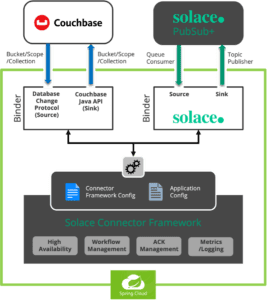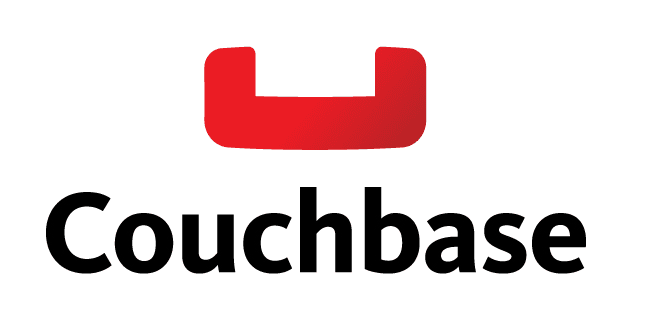docker pull solace/solace-pubsub-connector-couchbaseClick to Copy!
Couchbase
The Solace Micro-Integration for Couchbase provides a 2-way integration with Couchbase via the database change protocol (DCP). The source micro-integration can get the insert/update data from the specified bucket/scope/collection, publish the changes to a Solace Event Broker and your event mesh. The sink micro-integration can consume events from Solace Event Broker, insert/update to the target bucket/scope/collection. The opens up that data to your modern applications built with event-driven architecture (EDA).

This 2-way integration is configured via “workflows” in your micro-integration instance. A workflow is a source-to-processing-to-target data pipeline configured within the micro-integration runtime. Each workflow (you can have up to 20 defined per micro-integration instance), defines a source (e.g. a Solace queue), any header processing necessary for the target, and a target destination. When active, events will stream across these Workflows.
Features & Use Cases
The connector is available as:
- A runnable package based on a Java JAR file including a start script/a set of config files.
- A container image suitable for running in a container runtime such as Docker or Podman
PubSub+ Connector for Couchbase is a “self-contained connector” from Solace. All self-contained connectors share a common architecture and provide a number of enterprise services to the connectors such as:
- A local management server accessible over HTTP(s) and JMX exposing endpoints for:
- Health check
- Metrics monitoring
- Log file access
- Workflow administration (start & stop workflows)
- A common set of configuration options for:
- logging – log levels, log file size, archive and rollover rules, appenders to export to other log services
- security setup for management endpoints – authentication and authorization to the endpoints, TLS for HTTPS endpoints
- Various runtime deployment options:
- Standalone
- Active_Standby – for redundancy (you can have more than 1 standby instance)
- Active_Active – for horizontal scaling (where the source of data will support multiple active consumers such as a non-exclusive queue in PubSub+)

